
Introduction
calendar for october 2026 represents a significant subject within its field, encompassing a range of practices, traditions, or applications that shape daily life and broader cultural or professional landscapes. Understanding calendar for october 2026 provides clarity about its background, its present relevance, and the way it continues to influence various aspects of society.
Definition and Origin of calendar for october 2026
A calendar, in its most fundamental sense, is a system for organizing days for social, religious, commercial, or administrative purposes. It achieves this by giving names to periods of time, typically days, weeks, months, and years. The specific designation "calendar for October 2026" refers to the structured arrangement of the days within the tenth month of the year 2026, providing a clear visual and conceptual framework for that particular period. This includes the sequence of dates, the days of the week they fall upon, and often, indications of public holidays or significant observances.
The concept of organizing time dates back to ancient civilizations, driven by astronomical observations and the need to track agricultural cycles, religious festivals, and governmental functions. Early calendars were lunar, solar, or lunisolar, each attempting to reconcile the movements of celestial bodies with human activity. The modern calendar system widely adopted across the globe is the Gregorian calendar, a solar calendar introduced by Pope Gregory XIII in 1582. This system refined the Julian calendar, correcting its accumulated error regarding the length of the tropical year, thereby ensuring a more accurate alignment with the seasons.
October, as the tenth month, derives its name from the Latin word "octo," meaning eight. This seemingly incongruous naming reflects its position in the original Roman calendar, which began in March before the additions of January and February. The year 2026 simply specifies the particular annual cycle within this established system, positioning this specific month as a future point for planning and reference. Thus, the calendar for this future month is a product of millennia of human effort to measure and manage time, distilled into a practical tool for contemporary life.
Importance of calendar for october 2026 Today
The relevance of the calendar for October 2026 extends across numerous facets of modern existence, serving as an indispensable tool for both individual and collective organization. On a personal level, it provides the framework for managing daily routines, scheduling appointments, planning family events, and marking personal milestones. Without a clear understanding of the days and weeks within this specific month, individuals would struggle to coordinate their lives effectively, leading to missed commitments and general disarray. This particular month, often associated with autumn, harvest festivals, and events like Halloween, carries its own unique rhythm and set of potential observances that require foresight.
Professionally, the October 2026 calendar is critical for strategic planning and operational efficiency. Businesses utilize it for setting project deadlines, scheduling meetings, planning marketing campaigns, and managing fiscal reporting cycles. Academic institutions rely on it for structuring semesters, assigning due dates for assignments, and scheduling examinations. For many organizations, October marks the beginning of the fourth quarter, a crucial period for year-end reviews, budget finalizations, and strategic preparations for the upcoming year. Its fixed structure enables teams to synchronize efforts, allocate resources, and monitor progress against established timelines, fostering accountability and ensuring the smooth execution of tasks.
Culturally and socially, the calendar for October 2026 holds significance for identifying and celebrating various holidays, festivals, and observances. These can range from national holidays, religious festivals, to local community events. Such dates often dictate social gatherings, travel plans, and commercial activities, influencing consumer behavior and community engagement. Furthermore, in a world increasingly reliant on global connectivity, a standardized calendar facilitates international communication and coordination, allowing individuals and organizations across different time zones and cultures to operate on a shared temporal understanding. The foresight provided by this calendar allows for proactive engagement with these cultural touchstones, ensuring their continuity and vibrancy.
Benefits of calendar for october 2026
The utility of a calendar for a specific month like October 2026 offers a multitude of benefits that enhance productivity, reduce stress, and improve overall life management. One primary advantage is the organization and structure it imparts. By clearly delineating days, weeks, and dates, it provides a tangible framework upon which to build schedules, categorize tasks, and prioritize commitments. This visual representation of time helps individuals and organizations to conceptualize the flow of the month and plan accordingly.
Another significant benefit is reduced stress. When responsibilities, appointments, and deadlines are clearly laid out, the likelihood of forgetting crucial tasks or double-booking decreases significantly. This clarity fosters a sense of control and preparedness, mitigating the anxiety often associated with unmanaged time. Knowing what lies ahead allows for adequate preparation, whether for a major presentation, a family gathering, or a personal goal.
The calendar also greatly contributes to improved productivity. With a structured schedule, time can be allocated more efficiently, allowing for focused work periods, dedicated breaks, and planned personal time. This prevents time from being wasted on indecision or reactive task management. By breaking down larger goals into manageable monthly or weekly segments, progress becomes more tangible and motivation is sustained.
Furthermore, a shared understanding of the calendar for October 2026 enhances communication and coordination. In professional settings, team members can synchronize their work, schedule collaborative sessions, and track project milestones effectively. Within families, it facilitates the coordination of appointments, school events, and social engagements, ensuring everyone is aware of upcoming activities. This shared temporal reference point minimizes misunderstandings and promotes harmonious interaction.
Finally, the calendar supports goal achievement and strategic foresight. It serves as a roadmap for pursuing both short-term and long-term objectives. By marking key dates and deadlines, individuals and organizations can track progress, make necessary adjustments, and stay on course. For October 2026, this might involve end-of-year financial planning, holiday season preparations, or academic project submissions, all of which benefit from proactive scheduling and a clear view of the timeline.
Applications of calendar for october 2026
The applications of the calendar for October 2026 are diverse, spanning virtually every sector of human activity. In personal life, it is an essential tool for managing daily existence. Individuals use it to schedule doctor’s appointments, plan social gatherings, book travel, track bill payment due dates, and mark personal celebrations like birthdays or anniversaries. It enables the balancing of work, family, and leisure, ensuring that all aspects of life receive appropriate attention.
Within the educational sector, the calendar is fundamental. Academic institutions publish calendars detailing semester start and end dates, holiday breaks, registration periods, assignment deadlines, and examination schedules for October 2026. Students rely on it to organize their study time, track project submissions, and prepare for midterms or final assessments. Educators use it for lesson planning, grading timelines, and coordinating extracurricular activities.
In business operations, the applications are extensive. Project managers use the calendar to define timelines, allocate resources, and track progress for various initiatives. Marketing departments plan campaigns around specific dates or seasonal events occurring in October. Financial teams schedule reporting cycles, budget reviews, and tax deadlines. Human resources departments manage employee schedules, training sessions, and performance reviews. Retailers specifically leverage the October calendar for Halloween-related sales and early holiday season promotions.
Event management relies heavily on precise calendar planning. Organizers of conferences, festivals, concerts, and community events for October 2026 meticulously schedule venues, vendors, performers, and marketing efforts around specific dates. Public services and government bodies also utilize the calendar for legislative sessions, public holiday declarations, community outreach programs, and the implementation of new policies or regulations.
Furthermore, in healthcare, calendars are crucial for patient scheduling, managing surgical procedures, coordinating medical staff shifts, and planning research timelines. Even in sectors like agriculture, while less about specific dates and more about seasonal cycles, the general period of October is significant for autumn harvests and preparing for winter, with specific tasks often mapped out on a calendar. The widespread adoption of digital calendars has further expanded these applications, allowing for real-time synchronization, reminders, and integration with other productivity tools across all these domains.
Challenges and Future of calendar for october 2026
While the calendar for October 2026 offers immense benefits, its use is not without challenges, and its future is subject to evolving technological and societal trends. One significant challenge is the potential for over-scheduling and burnout. The ease of adding events to digital calendars can lead to individuals and teams committing to too many tasks, resulting in stress, reduced effectiveness, and a lack of flexibility. Striking a balance between structured planning and leaving room for spontaneity or unforeseen events remains a persistent issue.
Another challenge lies in managing the flexibility versus rigidity paradox. While a calendar provides a necessary structure, life is often unpredictable. Unexpected changes, emergencies, or new opportunities can disrupt meticulously planned schedules, requiring constant adjustment and adaptability. The proliferation of various calendar platforms (digital, physical, shared, personal) also presents a challenge in synchronization and consistency, ensuring all commitments are captured and updated across different systems. Data security and privacy, especially for digital and shared calendars containing sensitive information, represent a growing concern that requires robust solutions.
Looking to the future, the evolution of the calendar for October 2026, and calendars in general, is likely to be driven by advancements in artificial intelligence and connectivity. AI-powered predictive scheduling could become more sophisticated, anticipating needs, optimizing time allocation based on individual preferences and external factors (like traffic or weather), and even suggesting proactive measures. Integration with smart home systems and IoT devices could allow calendars to trigger actions, such as adjusting lighting for a scheduled event or preheating an oven for a planned meal.
Personalization will also play a larger role, with calendars offering highly customized views and recommendations based on user habits, goals, and well-being metrics. The development of more intuitive interfaces, voice-activated commands, and seamless integration across all digital ecosystems will enhance accessibility and ease of use. The future of calendar management will likely move towards a more intelligent, proactive, and deeply integrated system that not only tracks time but actively assists in optimizing its use, transforming it from a mere record-keeping tool into a dynamic, intelligent personal assistant.
FAQs about calendar for october 2026
Q1: What is calendar for october 2026?
The calendar for October 2026 is a structured representation of the days, weeks, and dates within the tenth month of the year 2026. It serves as a fundamental tool for organizing and tracking time, providing a clear overview of the month’s duration and the sequence of its days, along with their corresponding weekdays.
Q2: Why is calendar for october 2026 important?
Its importance stems from its role in facilitating personal, professional, and cultural organization. It enables individuals to manage appointments and events, businesses to plan projects and deadlines, and communities to observe holidays and festivals. This specific calendar provides the foresight necessary for effective planning and coordination for that particular month.
Q3: What are the main benefits of calendar for october 2026?
Key benefits include enhanced organization and structure, which reduces stress by providing clarity on commitments. It also improves productivity through efficient time allocation, fosters better communication among groups, and supports the achievement of goals by offering a clear timeline for tracking progress.
Q4: How can calendar for october 2026 be applied in daily life?
In daily life, it can be applied to schedule personal appointments, manage work projects, plan social gatherings, track financial obligations like bill payments, and organize academic schedules. It serves as a central hub for coordinating various activities and responsibilities within the month.
Q5: What challenges are associated with calendar for october 2026?
Challenges include the risk of over-scheduling, leading to burnout, and the need to balance structured planning with the flexibility required for unforeseen changes. Other challenges involve synchronizing multiple digital and physical calendars, and addressing data security and privacy concerns, particularly with shared online platforms.
Tips for calendar for october 2026
Understand the fundamentals.
Before populating the calendar for October 2026, it is beneficial to grasp its basic structure. This includes knowing which day of the week the month begins and ends, identifying any fixed public holidays or significant observances, and understanding the number of weekdays and weekends available. This foundational knowledge aids in realistic planning and avoids common scheduling conflicts.
Focus on practical use.
The calendar is a tool designed for practical application, not just theoretical planning. Actively input appointments, deadlines, and personal commitments. Regularly review the schedule, making adjustments as necessary. Integrate it into daily routines by checking it each morning or evening to stay abreast of upcoming tasks and ensure commitments are met.
Stay updated on new trends or research.
The landscape of calendar management, especially digital tools, is continuously evolving. Explore new features in existing calendar applications, investigate emerging productivity methodologies, or consider integration options with other software. Staying informed can reveal more efficient ways to manage time and leverage the calendar’s capabilities.
Avoid common mistakes.
Common pitfalls include over-committing, neglecting to schedule buffer time between tasks, and failing to regularly review and update the calendar. It is also important to avoid letting the calendar become a source of stress; instead, view it as an aid to managing time effectively. Prioritize tasks and learn to decline commitments when necessary to maintain balance.
Adopt a long-term approach.
While focusing on October 2026, it is beneficial to view this month within a broader annual or multi-year context. Consider how the month’s activities contribute to larger goals, whether personal, professional, or academic. This long-term perspective helps in strategic planning, ensuring that current efforts align with future aspirations and that the calendar serves as a stepping stone towards continuous progress.
Conclusion about calendar for october 2026
The continuing importance of calendar for october 2026 cannot be overstated. It stands as a testament to humanity’s enduring need for order and foresight, providing a structured framework that underpins both individual lives and complex societal functions. Its cultural significance is evident in the coordination of observances and traditions, while its professional utility is indispensable for strategic planning, project management, and operational efficiency. On a personal level, the calendar empowers individuals to navigate their daily lives with greater clarity and purpose. While challenges such as over-scheduling and the complexities of digital integration exist, the fundamental benefits of organization, stress reduction, and enhanced productivity far outweigh them. As technology evolves, the calendar will undoubtedly adapt, ensuring that calendar for october 2026, and all subsequent months, remains a central element of progress and relevance into the future.
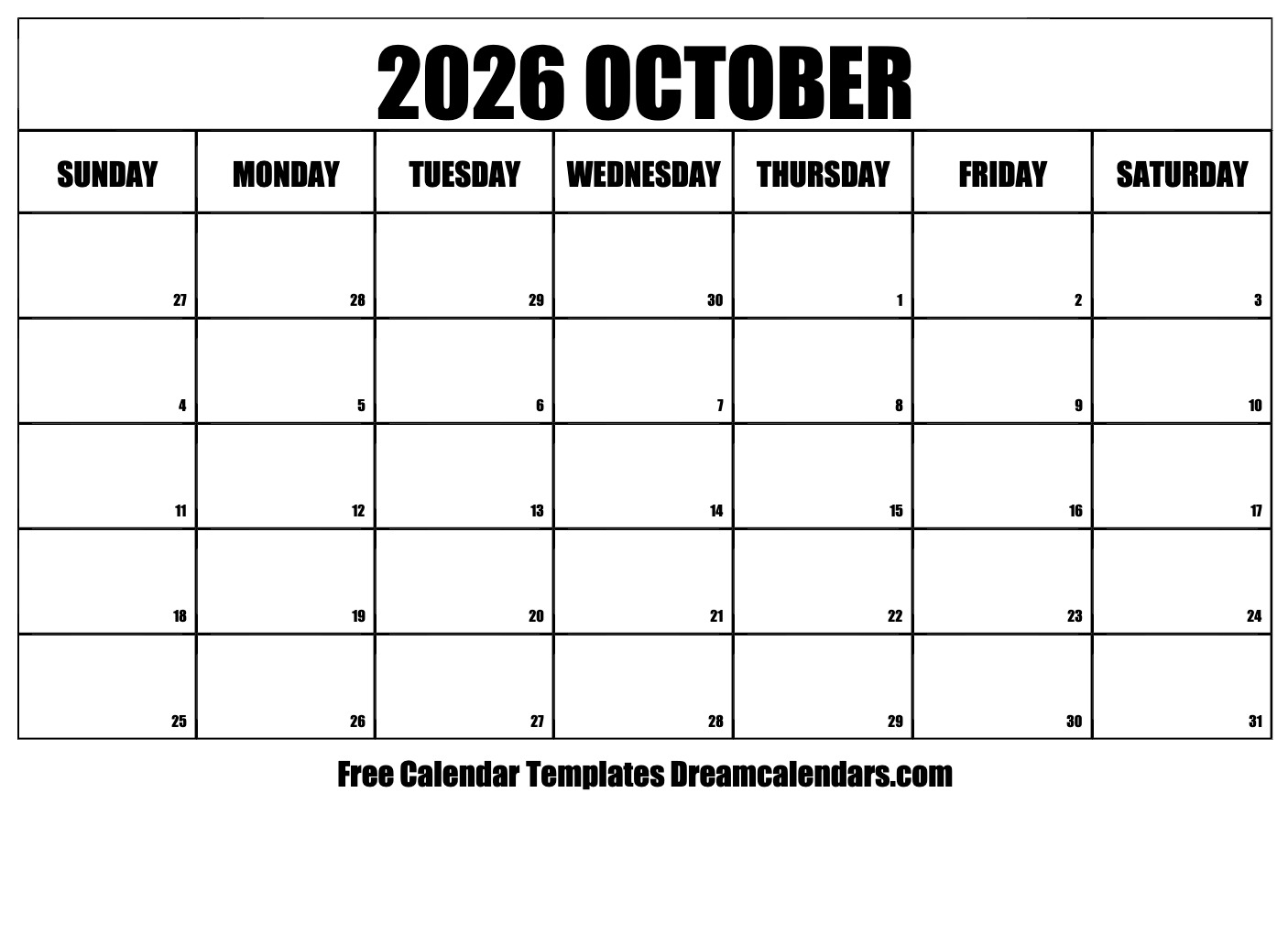
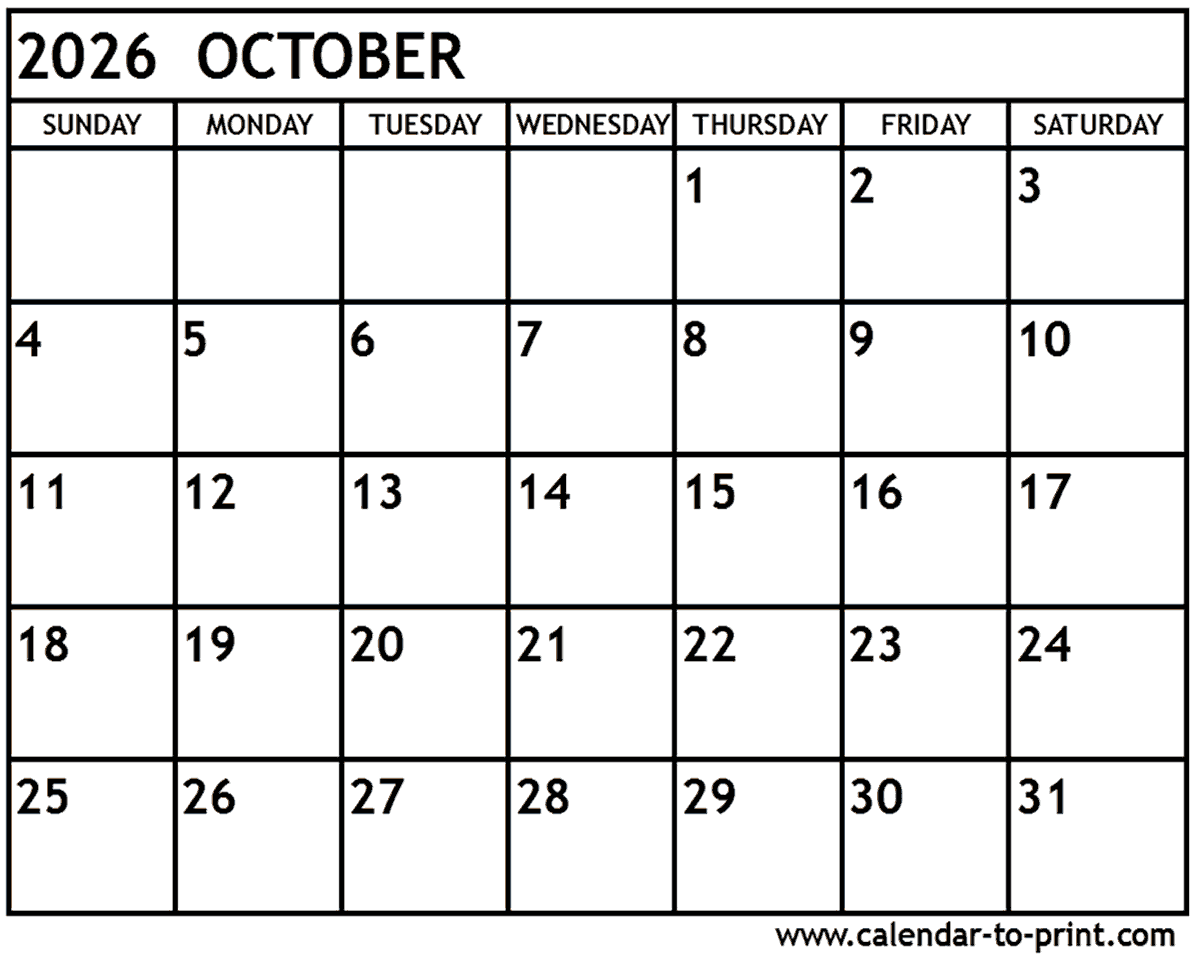

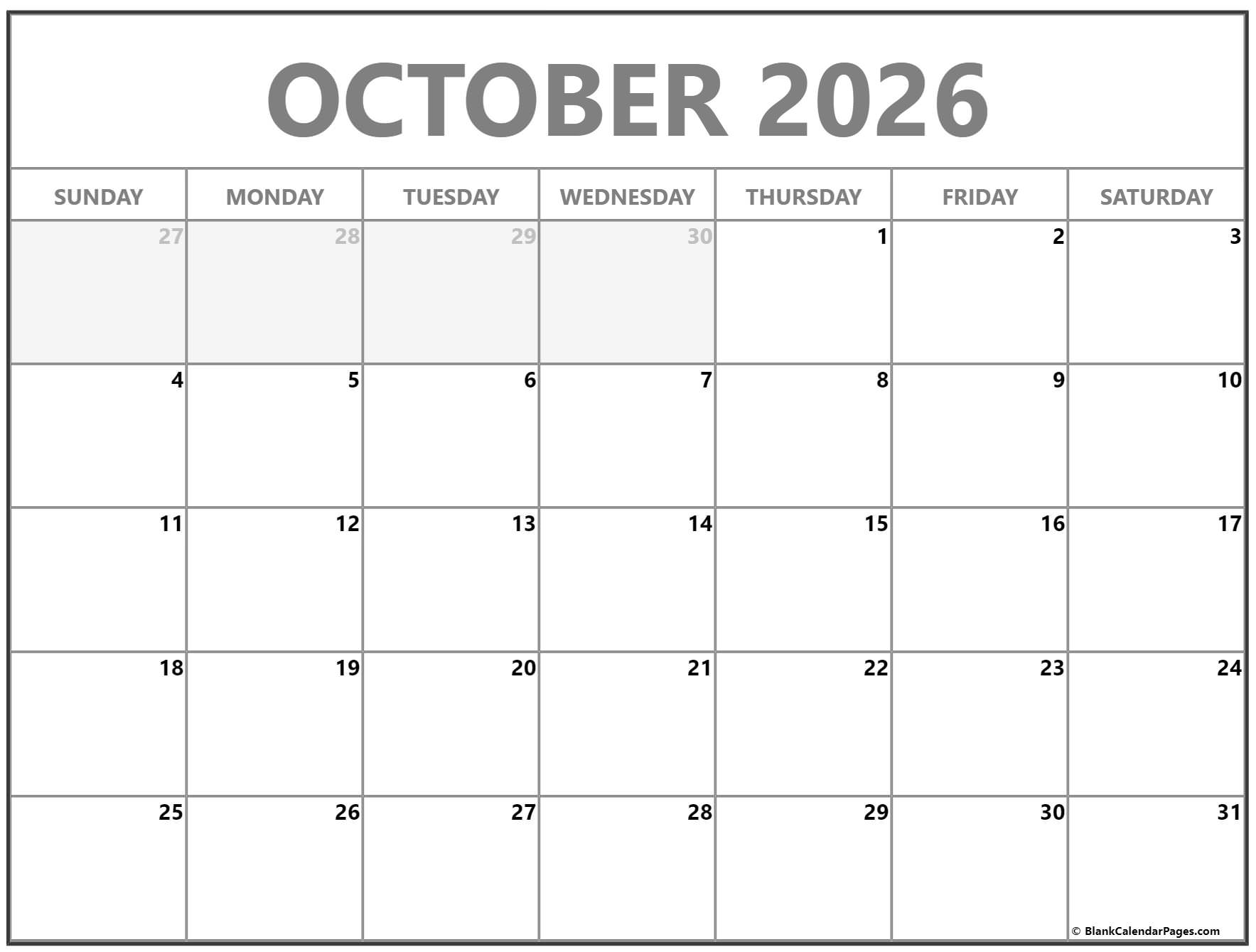
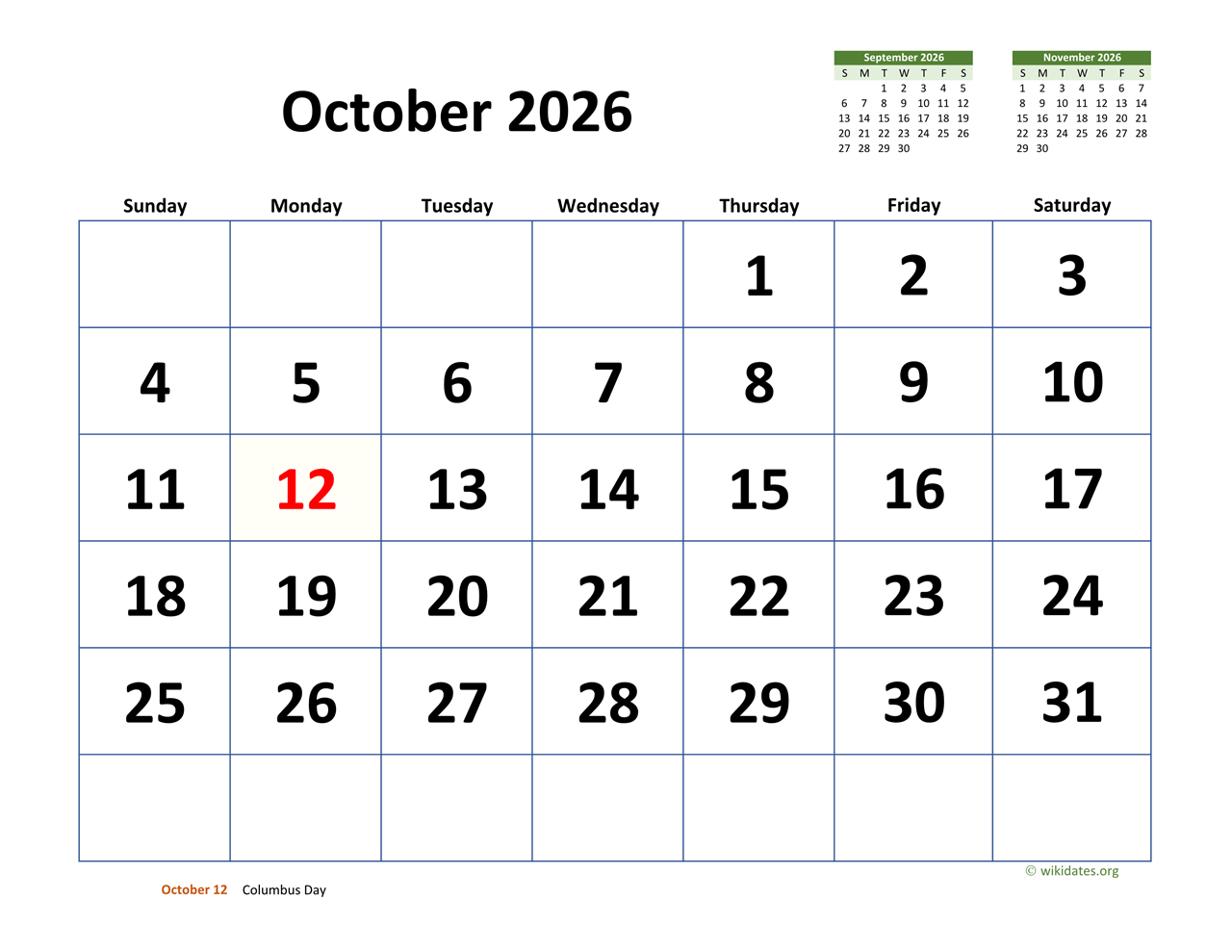
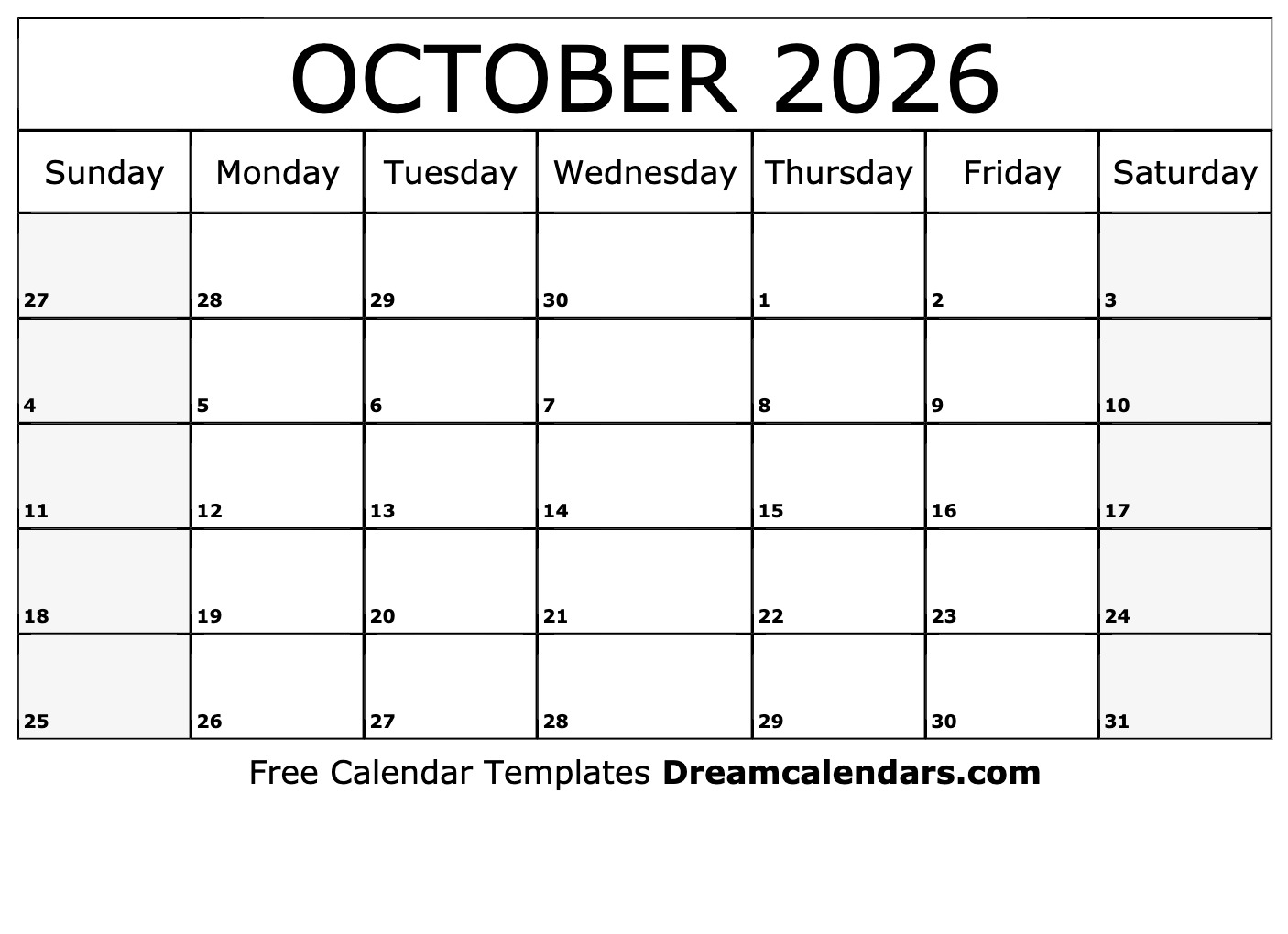

Leave a Reply